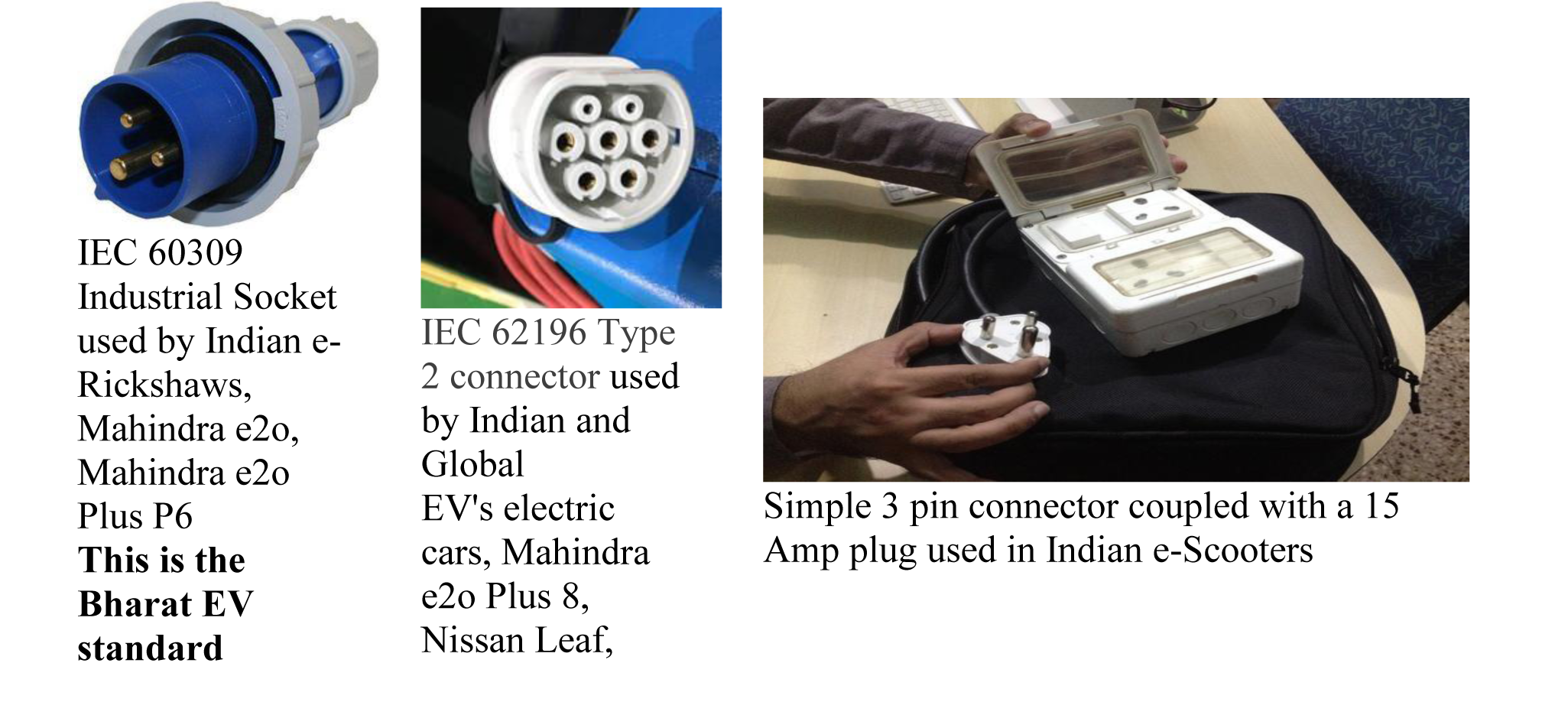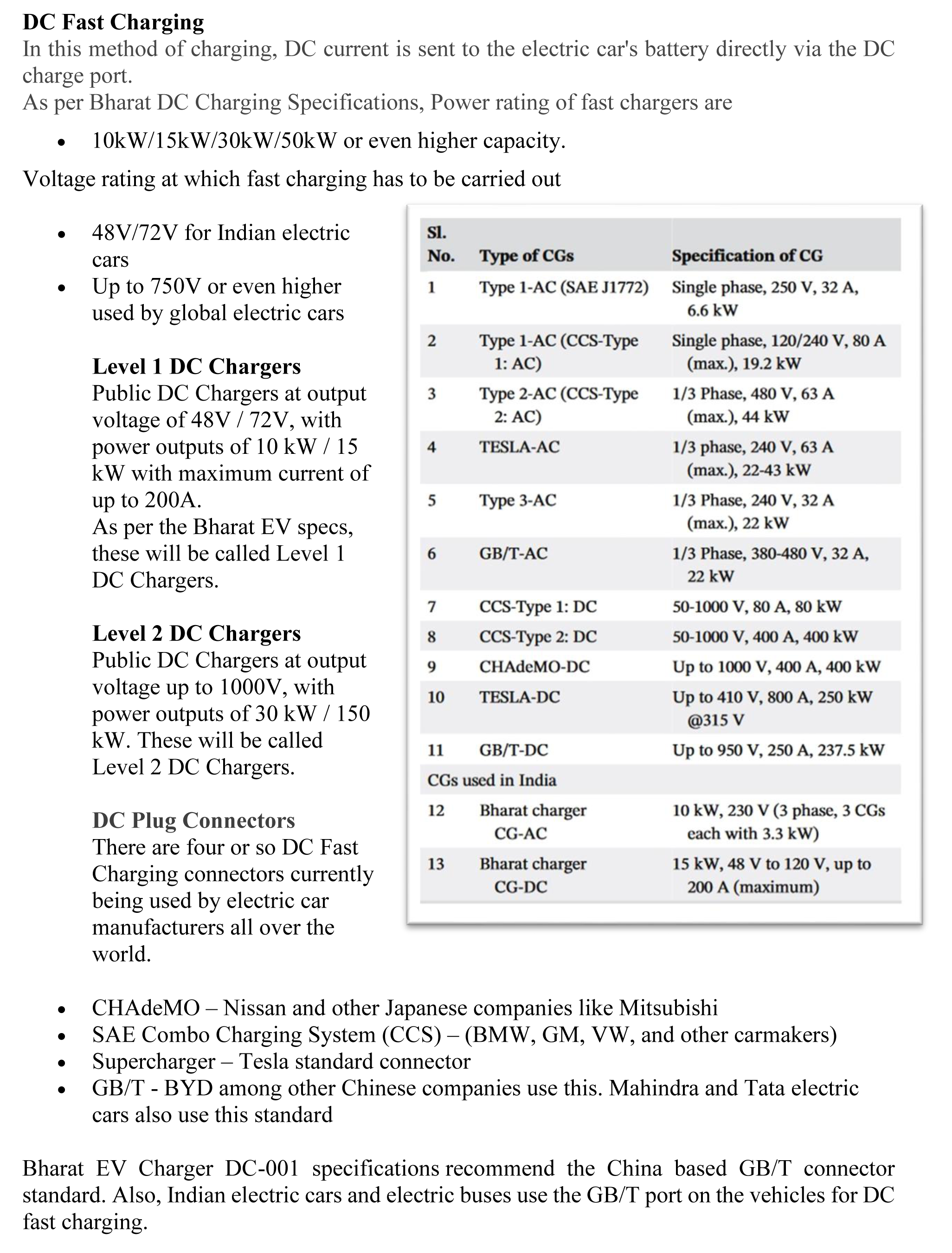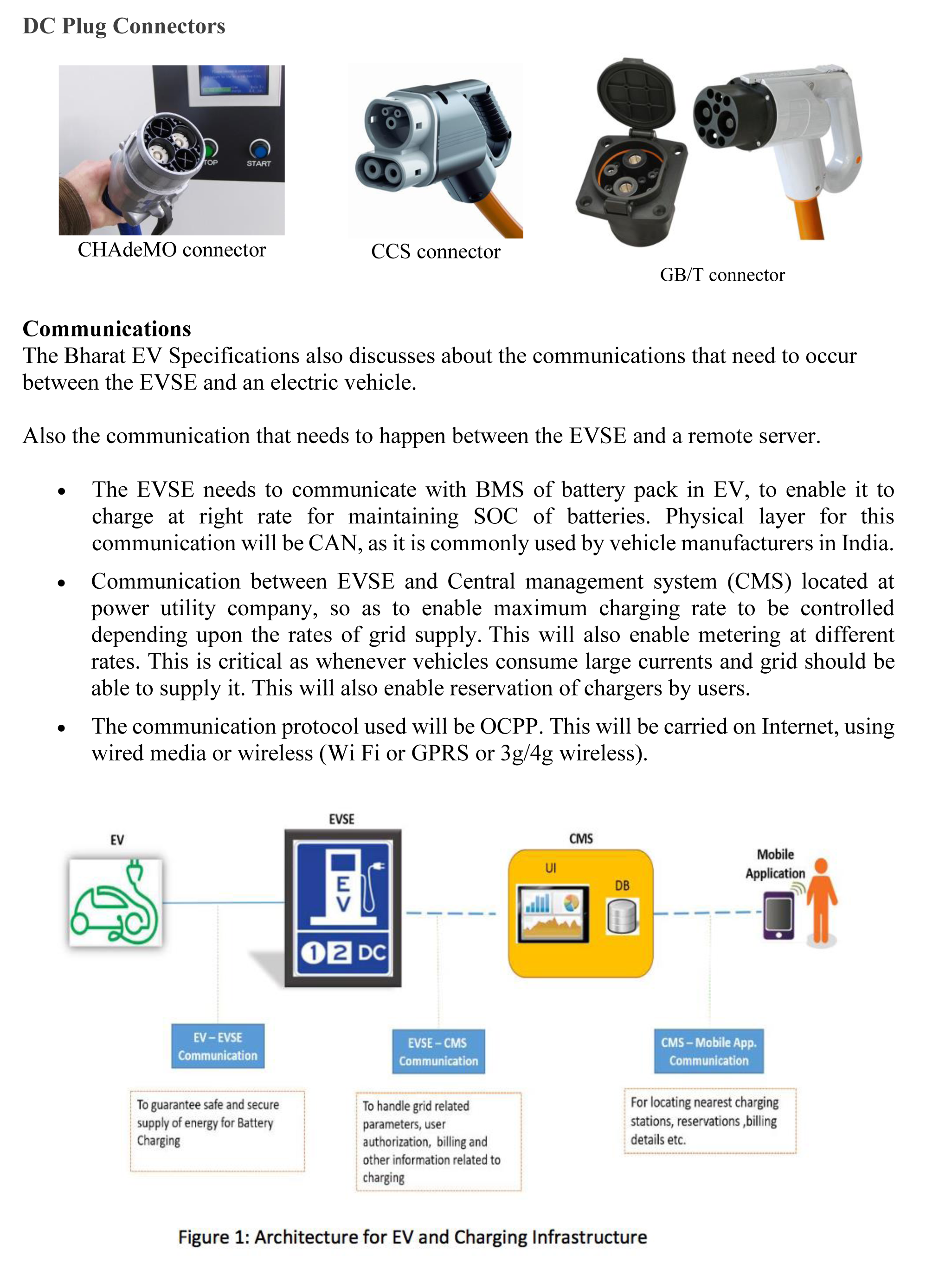- info@nesol.in
- +91 8812856449
The Committee on standardisation of protocol for Electric Vehicles (EV) Charging Infrastructure has come out with recommendations entailing specifications for AC and DC charging for electric vehicles. These standards are called - Bharat EV Charger AC-001 and Bharat EV Charger DC-001.
What is an Electric Vehicle Supply Unit (EVSE)?
In simple terms, an EVSE is a wall mounted box that - that supplies electric energy for the
recharging of electric vehicle batteries.
The wall charger or charging station is really just a device that safely allows electricity to flow. The EVSE enhances safety by enabling two-way communication between the charging station and the electric vehicle.
Also, EVSE's have a safety lock-out feature that does not allow current to flow from the device until the plug is physically inserted into the car. ARAI and Bharat EV specs recommend using EVSE's to charge any EV safely as compared to using a simple 15 Amp 240 V socket.
Also the current passed to the vehicle is both below the limits of the EVSE and below the limits of what the car can receive.
For example the Mahindra e2o charges (AC Charging) at a rate of 2 kw. And that is the limit at which charging occurs. So even if the EVSE is capable of sending in more power, the car charges at 2 kw. Global EV's like the Nissan Leaf or the Tesla Model S for example can charge at a higher rate upto 22 kw. This enables AC charging at a faster rate.
Also most EVSE's come with added features like
So essentially an EVSE is a wall mounted box that - that supplies electric energy to the onboard charger for the recharging of electric vehicle batteries, with lots of intelligence built-in. You can be assured that you are charging your EV in a safe and smart manner.
Home Charging
The home private chargers are generally used with 230V/15A single phase plug which can
deliver a maximum of up to about 2.5KW of power. Thus, the vehicles can be charged only up
to this rate. The billing for the power is part of home-metering. This will be continued till a
policy evolves to charge the home users differently for EV use. Also Bharat EV Specs
recommends using the IEC 60309 Industrial connector from both ends.
Public Charging
For charging outside the home premises, Bharat EV standards recommends that the electric
power needs to be billed and payment needs to be collected. The power utilities may also want
to manage power drawn by these chargers from time to time.
AC "Slow" Charging
Slow AC charging is the most common method of charging electric vehicles.
An EVSE supplies AC current to the vehicle’s onboard charger which in turn converts the AC
power to DC allowing the battery to be charged.
So when you charge your say Mahindra e2o or the e2o plus electric car or a Lithium-Ion based e-Scooter using a 15 Amp socket or a smart charger, then you are charging you are - AC charging your EV.
Under AC Charging there are 2 categories of charging
AC Plug Connectors
Indian electric cars use the IEC 60309 Industrial Blue connectors and Bharat EV specifications
recommend using this plug.
Global EV's use the IEC 62196 Type 2 connector (commonly referred to as Mennekes). This plug was selected by the European Commission as official charging plug within the European Union. It has since been adopted as the recommended connector in countries outside of Europe.


